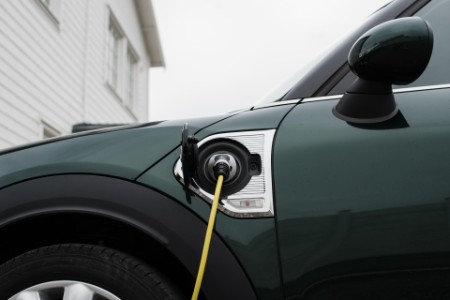To build a sustainable world, organizations in every industry must change the way they work. Legacy industries must evolve, and new industries must be created that deliver new sustainable products and services and build long-term financial and societal value. Industries, investors and governments must work more closely together to support, incentivize and reward the visionaries who are thinking big, committing early and moving fast.
The emerging eMobility ecosystem is a case in point. The electrification of road transport represents the most radical transformation in mobility since the introduction of the internal combustion engine (ICE) in the early 19th century. As a consequence, the way the world works is being turned on its head.
The potential gains for business and society are vast. Electrification offers local and national governments an opportunity to make transportation more sustainable and improve their citizens’ lives, with cleaner roads and redesigned electric vehicle (EV)-friendly cities. Automotive companies have a chance to transform their own businesses and reimagine their entire supply chains. And in the power and utilities sector, there is potential growth not just in the volume of electricity sold but also in associated EV products and services.
But as new entrants scale and sector boundaries blur, legacy players – from vehicle manufacturers to power and utilities companies, fuel suppliers to governments – must adapt to thrive.
This is too substantial a change to society for any one industry to be able to tackle the challenge alone – which means players will need to fundamentally rethink their strategies and business models to successfully reframe their future within the new ecosystem. Organizations are learning that they must collaborate to share risk and capitalize on growth opportunities.
For companies on their eMobility journey, we have identified five key challenges threatening to slow the rise of electrified transport – and how to overcome them.
1. Electrifying infrastructure
The challenge: Deploying new eMobility infrastructure represents an enormous logistical challenge. It must be both sufficient and efficient, designed and deployed in a way that anticipates consumer demand and generates returns on investment – without risking existing assets.
The solution: A smarter, more adaptable grid will facilitate the growth of the eMobility sector, while innovations such as vehicle-to-grid storage will help manage variable load. Organizations must collaborate on structure, planning and execution to roll out the fast-charging infrastructure required. Data and insights can inform where and how to build, but this requires technology platforms and back-office operations that are fit for purpose in the new eMobility ecosystem.
2. Winning customers
The challenge: Whether individuals or fleet owners, customers want value for their money and ease of use, from brands they trust. Individuals want an EV that is also a smart device, while fleet owners need logistical help to transition from internal combustion engine (ICE) vehicles.
The solution: Companies and regulators should work together to create common standards and platforms to engage with customers. This would facilitate an integrated eMobility experience that seamlessly connects the vehicle to charging infrastructure, adds value for the customer and helps manage the costs of ownership.
3. Driving returns
The challenge: In a rapidly changing market, organizations need to find ways to raise capital, minimize risk and deliver growth from eMobility over both the short and long term.
The solution: Financial modeling can cut through the complexity to identify the best opportunities in the emerging eMobility ecosystem. To boost return on investment, organizations should take advantage of tax breaks and incentives, use innovative financial structuring such as fractional ownership, and find ways to spread the costs of investment over time.


